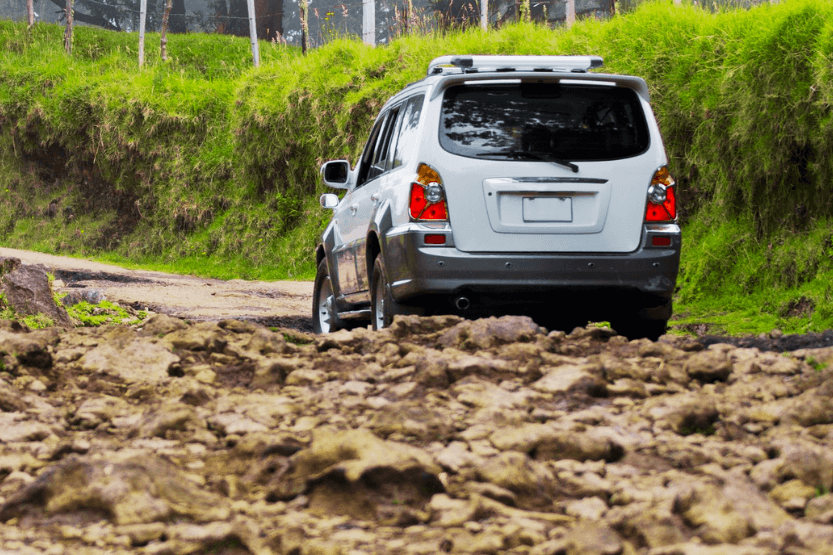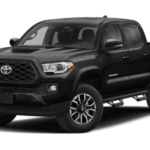When it comes to driving in 4 high, many people wonder how fast they can safely go without damaging their vehicle.
The answer varies depending on the make and model of the vehicle, as well as the driving conditions. In general, however, it is recommended that drivers do not exceed speeds of 55 mph when using 4 high.
Engaging 4 high increases the driveshaft torque and supplies power to all four tires. This means that there is an additional force applied to the drivetrain components.
Driving at high speeds for extended periods in 4 high can cause excessive wear and tear on the drivetrain, leading to costly repairs down the line.
It is important for drivers to be aware of their vehicle’s specific guidelines for driving in 4 high. By following the manufacturer’s recommendations and driving at safe speeds, drivers can enjoy the benefits of 4 high without risking damage to their vehicle.
What is 4 High?

4 High is a setting on a four-wheel drive vehicle that engages all four wheels to provide better traction on slippery or unstable surfaces. When the driver selects 4 High, the transfer case sends power to both the front and rear axles, allowing them to turn at the same speed.
The drivetrain components involved in 4 High are the transfer case, front and rear axles, and drivetrain components such as the driveshaft and differential.
The transfer case is responsible for sending power to the front and rear axles, while the front and rear axles are responsible for transmitting power to the wheels.
4 High is often used for driving on snow, ice, mud, and other low-traction surfaces. It is important to note that 4 High is not meant for high-speed driving on dry roads, as it can cause damage to the drivetrain components.
Permanent 4WD vehicles have a 4 High setting that is always engaged, while other vehicles have the option to switch between 2WD and 4WD modes.
According to the information I gathered, 4 High is a useful feature that can provide better traction and stability in off-road and low-traction situations. It is important to use it appropriately and avoid high-speed driving on dry roads to prevent damage to the drivetrain components.
How Fast Can You Drive in 4 High?
When it comes to driving in 4 high, many drivers wonder how fast they can go without risking damage to their vehicle. The answer is that it depends on the make and model of your vehicle, but in general, the maximum speed you should drive in 4 high is 55-60 mph.
Is it OK to drive fast in 4 high?
While it may be tempting to push your vehicle to its limits, it’s important to remember that driving too fast in 4 high can cause damage to your four-wheel drive system. This is because 4 high is designed to be used in low-traction situations, such as driving on snow, mud, or gravel.
Going too fast in 4 high can cause excessive wear and tear on your vehicle’s drivetrain components, such as the transfer case, driveshaft, and axles. This can lead to costly repairs down the line.
In some cases, the manufacturer may set a different speed limit for 4 high depending on the vehicle’s model. It’s important to consult your owner’s manual or contact your dealership to find out the recommended maximum speed for your specific vehicle.
In addition to the speed limit, it’s also important to drive safely and responsibly when using 4 high. Always keep a safe distance from other vehicles and adjust your speed based on road conditions.
Based on the data I’ve collected, while it may be tempting to push your vehicle to its limits, it’s important to remember that driving too fast in 4 high can cause damage to your vehicle and put yourself and others at risk. Stick to the recommended speed limit and drive safely and responsibly.
Driving in Different Conditions

When driving in 4-high, it’s important to consider the road conditions. Here are some sub-sections that cover different driving conditions.
Snow and Ice
When driving on snowy or icy roads, it’s important to slow down and maintain a safe distance from other vehicles.
4-high provides better traction and grip on low traction surfaces, but it’s still important to drive cautiously.
It’s also important to avoid sudden movements that could cause the vehicle to lose control.
Rain
When driving in inclement weather, it’s important to slow down and maintain a safe distance from other vehicles.
4-high can help provide better traction on slippery surfaces, but it’s still important to drive cautiously. It’s also important to avoid sudden movements that could cause the vehicle to lose control.
Off-Road
When driving off-road on rough terrain, it’s important to slow down and watch out for obstacles such as deep holes or rocky terrain.
4-high provides better traction and grip on low traction surfaces, but it’s still important to drive cautiously. It’s also important to shift into 4-low when necessary for more torque and better control.
Highway
When driving on the highway, it’s important to maintain a safe speed and distance from other vehicles. 4-high can be used on flat roads with loose gravel, mud, or compacted sand, but it’s important to remember that driving in 4-high at high speeds could damage the four-wheel drive system.
It’s also important to avoid sudden movements that could cause the vehicle to lose control.
Sand
When driving on sand, it’s important to maintain a steady speed and avoid sudden movements that could cause the vehicle to get stuck. 4-high provides better traction on traction surfaces, but it’s still important to drive cautiously. It’s also important to air down the tires for better traction.
Hills
When driving uphill, it’s important to maintain a steady speed and avoid sudden movements that could cause the vehicle to lose traction. It’s also important to shift into 4-low for more torque and better control.
When driving downhill, it’s important to maintain a steady speed and avoid sudden movements that could cause the vehicle to lose control. It’s also important to avoid understeering and use the throttle and brakes to control the speed.
According to my findings, when driving in 4-high, it’s important to operate the vehicle with care and caution. Concerns and consequences of accidents can be minimized by following proper driving techniques and using the appropriate 4-wheel drive components for the driving conditions.
4 High vs. 4 Low

When it comes to 4-wheel drive (4WD) systems, there are two modes that are commonly used: 4 High and 4 Low. These two modes are intended for different driving scenarios and offer different benefits.
4 High
4 High is the mode that is typically used in everyday driving situations. It provides better traction and stability on slippery surfaces, such as snow, mud, and sand. In 4 High, all four wheels of the vehicle are engaged, and the engine torque is distributed evenly between the front and rear axles.
The gearing in 4 High is designed to provide a balance of power and speed. Most manufacturers recommend driving at speeds of up to 55 mph in 4 High. Driving at higher speeds can cause excessive wear on the drivetrain and center differential, potentially leading to costly repairs.
4 Low
4 Low is intended for more extreme off-road driving scenarios. It provides maximum torque and power, making it easier to climb steep inclines and navigate through deep mud or sand. In 4 Low, the engine torque is multiplied, and the gearing is designed to provide maximum power and traction.
Driving in 4 Low requires a slower speed due to the increased torque. Most manufacturers recommend driving at speeds of 10 mph or less in 4 Low. Driving at higher speeds can cause excessive wear on the drivetrain and center differential, potentially leading to costly repairs.
It is important to note that driving in 4 Low on dry pavement can cause damage to the drivetrain and center differential. It is only intended for use in extreme off-road scenarios.
Gearing and Engine Torque
The gearing and engine torque are the key differences between 4 High and 4 Low.
In 4 High, the gearing is designed to provide a balance of power and speed, while in 4 Low, the gearing is designed to provide maximum power and torque. The engine torque is also multiplied in 4 Low, providing more power to the wheels.
Center Differential
The center differential is responsible for distributing power between the front and rear axles. In 4 High, the center differential allows for some variation in wheel speed, which is necessary for turning on dry pavement.
In 4 Low, the center differential is locked, providing equal power to the front and rear axles.
Drivetrain
The drivetrain is the system that transmits power from the engine to the wheels. In 4 High, the drivetrain is designed to provide a balance of power and speed, while in 4 Low, the drivetrain is designed to provide maximum power and torque.
It is important to note that driving in 4 Low on dry pavement can cause excessive wear on the drivetrain and center differential.
In my personal experience as an automotive enthusiast, I can confidently assert that 4 High and 4 Low are indeed distinct modes with specific purposes tailored for different driving scenarios.
It is absolutely crucial to employ these modes appropriately to safeguard the integrity of the drivetrain and center differential.
Throughout my years of driving and extensive research on various vehicle systems, I have come to appreciate the significance of using the correct mode in the appropriate situation.
Failing to do so can result in detrimental consequences that may lead to costly repairs and compromises in vehicle performance.
By utilizing 4 High and 4 Low modes correctly, drivers can optimize their vehicle’s capabilities in diverse terrains and conditions while minimizing the risk of damaging crucial components.
This firsthand knowledge reinforces the importance of employing these modes judiciously to ensure the longevity and reliability of the drivetrain and center differential.
Final Impressions
When it comes to driving in 4 High, it is important to understand the limitations and guidelines set forth by the vehicle’s manufacturer.
As demonstrated by the search results, most manufacturers recommend not exceeding 55 MPH while driving in 4 High. However, it is always best to consult the owner’s manual for the specific speed limit of your vehicle.
While 4 High can provide excellent traction and stability in difficult driving conditions, it is not a substitute for safe driving practices. Drivers should always exercise caution and reduce speed when driving in hazardous conditions, regardless of whether they are in 4 High or not.
It is also important to note that driving in 4 High can reduce fuel efficiency. As such, it is recommended to only use 4 High when necessary and to switch back to 2WD when conditions improve.
Overall, driving in 4 High can provide added safety and stability in challenging driving conditions. However, it is important to follow manufacturer guidelines and exercise caution to ensure safe and efficient driving.


![High Build Primer [When to Use and Best Automotive High Build Primers] high build primer](https://roadsumo.com/wp-content/uploads/2021/06/High-Build-primer-150x150.jpg)
![Kawasaki Ninja 250 Top Speed [How Fast Can It Go?] kawasaki ninja 250 top speed](https://roadsumo.com/wp-content/uploads/2022/06/Kawasaki-Ninja-250-top-speed-150x150.jpg)





